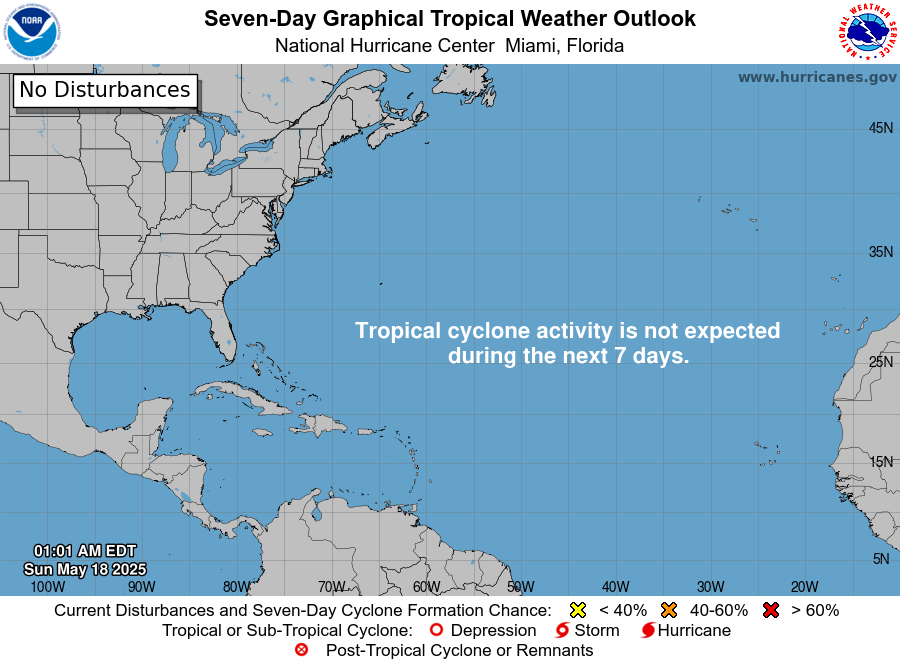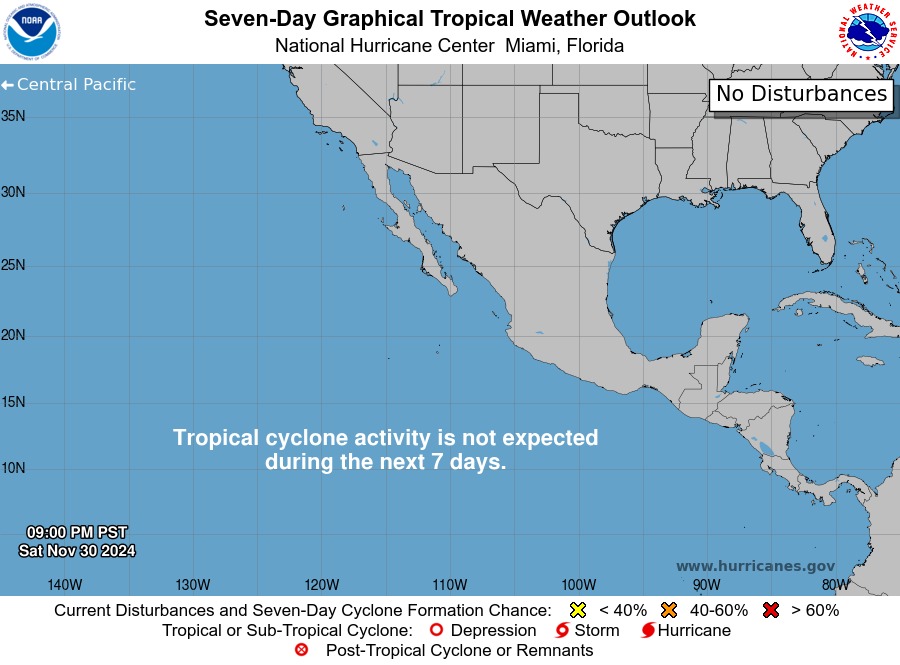This article focuses on what we are paying attention to in the next 48 to 72 hours. The article also includes weather maps for longer-term U.S. outlooks (up to four weeks) and a six-day World weather outlook which can be very useful for travelers.
First the NWS Short Range Forecast. The afternoon NWS text update can be found here after about 4 p.m. New York time but it is unlikely to have changed very much from the morning update. The images in this article automatically update.
Short Range Forecast Discussion
NWS Weather Prediction Center College Park MD
Sun Jan 19 2025
Valid 12Z Sun Jan 19 2025 – 12Z Tue Jan 21 2025…Winter storm to bring moderate to heavy snow to the Mid-Atlantic and
Northeast Sunday……Intrusion of Arctic Air bringing dangerously cold conditions to much of
the nation...…Impacts from a rare, significant winter storm across the South next
week will begin for Texas Monday night……A Critical Risk of Fire Weather returns for southern California
Monday…A winter storm is forecast to produce heavy snow across portions of the
Mid-Atlantic and Northeast today (Sunday). Some snow showers over the
Ohio/Tennessee Valleys and rain showers in the Southeast will linger into
Sunday morning following the passage of a cold front off the East Coast.
Meanwhile, an upper-level wave will help to deepen an area of low pressure
along a cold front Sunday morning which will move to the northeast just
off the coast through Sunday night. This will lead to a band of enhanced
snowfall developing inland to the northwest of the low track over the
Appalachians Sunday morning and from the northern Mid-Atlantic into New
England during the day. The heaviest snow will likely stay to the north
and west of the I-95 corridor. However, 3-6″ of snow with locally higher
amounts is expected form northern Maryland through Boston. Some
rain/wintry mix will be possible from northern Virginia to southern New
Jersey.Precipitation chances elsewhere through Monday include bands of heavy
lake-effect snow for favorable downwind locations of the Great Lakes with
cold northwesterly flow in place. Some snow showers will return to the
central/southern Rockies and adjacent High Plains on Monday as a shortwave
passes over the region and in the presence of post-frontal upslope flow.Another big story this weekend and heading into next week will be the
bitterly cold Arctic airmass spreading across most of the central/eastern
U.S. Temperatures have already plummeted across the Rockies, Plains, and
Mississippi Valley, and will reach the East Coast Sunday as the noted cold
front pushes offshore. This will be the coldest air of the Winter season
thus far, and in many cases the coldest in several years. Forecast highs
the next couple of days range from below zero to the single digits in the
northern Plains/Upper Midwest; the single digits and teens across the
Rockies, central Plains, and Midwest; the teens and 20s across the
Northeast and Mid-Atlantic; and the 20s and 30s for Texas and the
Southeast. Wind chills will reach dangerously cold levels, with minimum
wind chills from 30 to 55 below zero at times Sunday and Monday in the
Rockies, northern Plains and Upper Midwest. Sub-zero wind chills are
expected to reach as far south as Oklahoma and the Tennessee/Ohio Valleys
by Sunday night.The combination of this frigid air reaching the Gulf Coast and the
development of a low pressure system over the Gulf will lead to a
significant winter storm across the Gulf Coast/Southeast next week.
Initial impacts are expected to begin by late Monday night across eastern
and southern Texas. A corridor of potentially heavy snow is expected near
and just south of the Interstate 20 corridor, with a wintry mix of snow,
sleet, and freezing rain closer to the Interstate 10 corridor. Given the
rare southerly track of this winter storm, major traffic and travel
disruptions are likely through mid-week.Some of this Arctic airmass will reach portions of the Great
Basin/Interior West as well, with highs by Monday only in the 20s and 30s
for most locations. Forecast highs are generally more mild and around
average along the West Coast, with 40s for the Pacific Northwest, the 50s
and 60s for California, and the 60s to low 70s for the Desert Southwest.
Unfortunately, these mild conditions along with gusty winds and very low
humidity have prompted the Storm Prediction Center to issue a Critical
Risk of Fire Weather (level 2/3) Monday for southern California.
To get your local forecast plus active alerts and warnings click HERE and enter your city, state or zip code. If the Hazards Outlook is not updated click here but remember it does not update during the weekend.
Learn about wave patterns HERE.
Then, looking at the world and of course, the U.S. shows here also. Today we are looking at precipitation.
Please click on “Read More” below to access the full Daily Report issued today.
| Notices: What would you like to learn about? Please provide that to me via the comment section at the end of the article. |
Now more detail on the 48-Hour Forecast (It is a 48 to 72 Hour Forecast actually)
Daily weather maps. The Day 1 map updates twice a day and the Day 2 and 3 maps update only once a day. These maps update automatically. But if that does not happen, you can get updates by clicking HERE
TODAY (or late in the day the evening/overnight map will appear) (Key to surface fronts shown on maps and you will then also be able to insert a city name or zip code and get a local NWS forecast).

TOMORROW

NEXT DAY

We have a new animation of the forecast which shows how things may play out over the next 60 hours. To update click ANIMATION. Doing so will get you to the dashboard. You can then step through the animation or hit LOOP on the upper right of the display. You will have to hit the back arrow ← at the top left on your computer to get back into this article. It is a little more trouble than before but I think NOAA scrapped the animation routine I was using so we have to keep up with “progress”.
The NWS Climate Prediction Center’s: Watches, Warnings, and Advisories plus other information can be found HERE. That takes you to the NWC Severe Weather Site. From there you can select among many categories of information. Remember to hit the back arrow ← at the top left of your screen to return to this article.
ATMOSPHERIC RIVERS
This tells us what is approaching the West Coast. Click HERE to update If I have not gotten around to doing the update. Here is some useful information about Atmospheric Rivers.

Below is the current five-day cumulative forecast of precipitation (Updates can be found HERE)

Ski SnowReports
New Feature – Ski Reports. It is difficult to find reports that auto-update on-screen (and they are very long) but these links will get you to them – If you have additional suggestions make them in the comments section after every Econcurrents Article and we may add those links. We will try to not have too much overlap as that can add to the confusion.
Snow Forecasts. And remember this shows natural snow. Ski resorts also make their own snow.
Day 1

Day 2

Now we look at Intermediate-Term “Outlook” maps for three time periods. Days 6 – 10, Days 8 – 14, and Weeks 3 and 4. An outlook differs from a forecast based on how NOAA uses these terms in that an “outlook” presents information as deviation from normal and the likelihood of these deviations.
Below are the links to obtain updates and additional information. They are particularly useful if you happen to be reading this article significantly later than when it was published. I always try to provide readers with the source of the information in my articles. These links may also be useful for those viewing this article on a cell phone or other small screen.
| Days 6 – 10 (shown in Row 1) | Days 8 – 14 (Shown in Row 2) | Weeks 3 and 4 (Shown in Row 3 but updates only on Fridays) |
| https://www.cpc.ncep.noaa. gov/products/predictions/610day/ | https://www.cpc.ncep .noaa.gov/products/predictions/814day/ | https://www.cpc.ncep.noaa.gov/products/predictions/WK34/ |
Showing the actual maps. They should now update automatically. The Week 3 – 4 Outlook only updates on Fridays. So below is what I call the Intermediate-term outlook. On Fridays, it extends out 28 Days. That declines day by day so on Thursday it only looks out 22 days until the next day when the Week 3 – 4 Outlook is updated and this extends the outlook by one additional week.
| 6–
10
|
|
|
| 8–
14 |
|
|
| 3–
4 |
|
|
HAZARDS OUTLOOKS
Click here for the latest complete Day 3 -7 Hazards forecast which updates only on weekdays. Once a week probably Monday or Tuesday I will update the images. I provided the link for readers to get daily updates on weekdays. Use your own judgment to decide if you need to update these images. I update almost all the images Friday Night for the weekend edition of this Weather Report. So normally readers do not need to update these images but if the weather is changing quickly you may want to.

Temperature month to date can be found at https://hprcc.unl.edu/products/maps/acis/MonthTDeptUS.png
Precipitation month to date can be found at https://hprcc.unl.edu/products/maps/acis /MonthPNormUS.png
World Forecast [that website is has been intermittent so be patient]
Below are the Day 1 -3 and 4-6 forecasts for temperature and precipitation. Updates and much additional information can be obtained HERE
World Temperature Anomalies


World Accumulated Precipitation


This information is provided by the University of Maine. They draw upon many different sources. There is a lot of information available at the link provided. I have just provided two useful forecasts. There are probably over a hundred different forecasts available from this source.
Worldwide Tropical Forecast (This is a NOAA Product)
This graphic updates on Tuesdays) If it has not been updated, you can get the update by clicking here Readers will only have to do that if they are reading this article much later than the date of it being published.
Information on Tropical Storms can be found HERE. Western Pacific information can be found HERE. Note that unless there is an out-of-season storm the below images will not update until the National Hurricane Center starts their seasonal update of these maps on June 1. I include them simply because there can be an out-of-season event in which case it should show up in these maps.


–
| I hope you found this article interesting and useful. |








